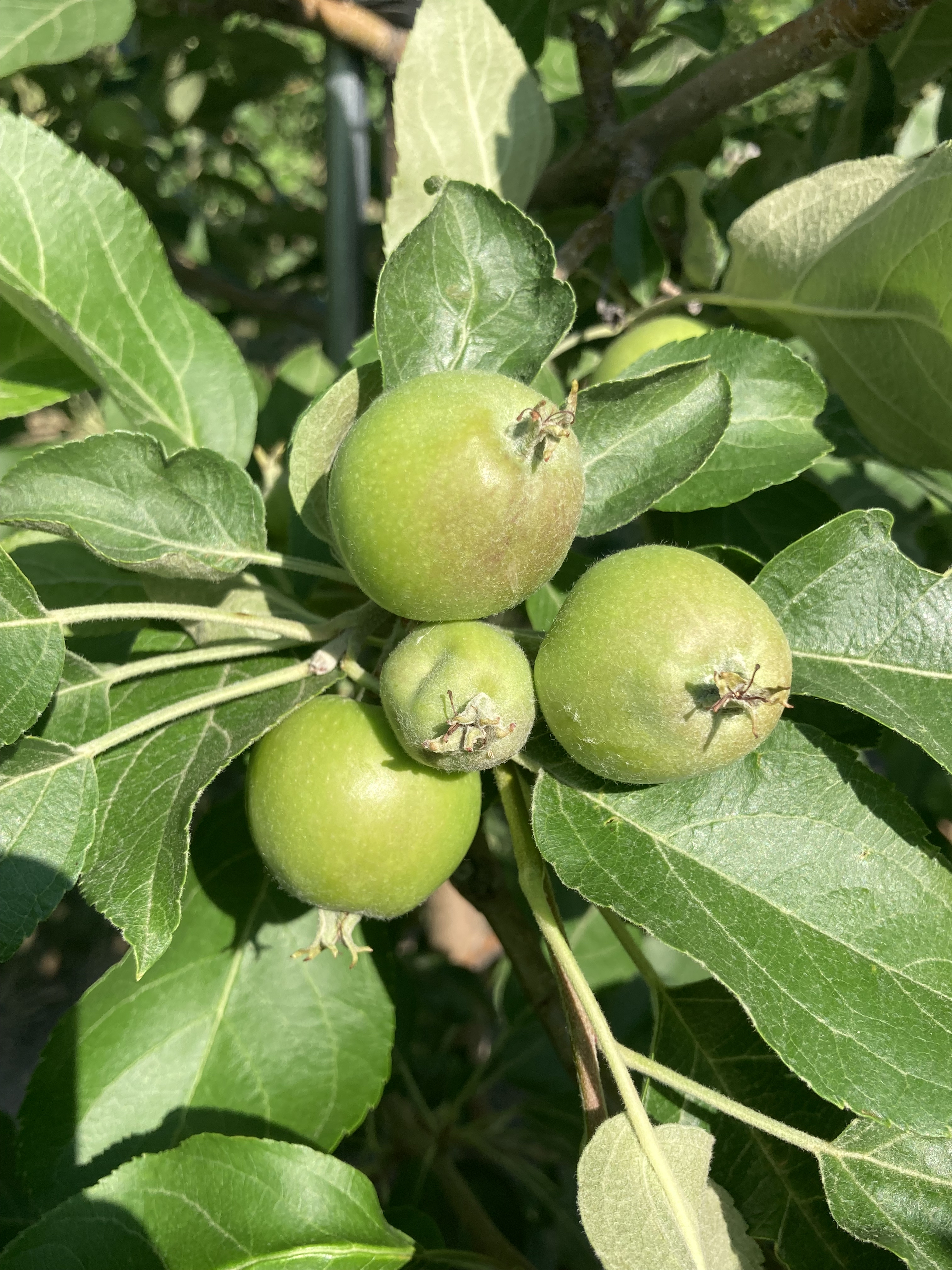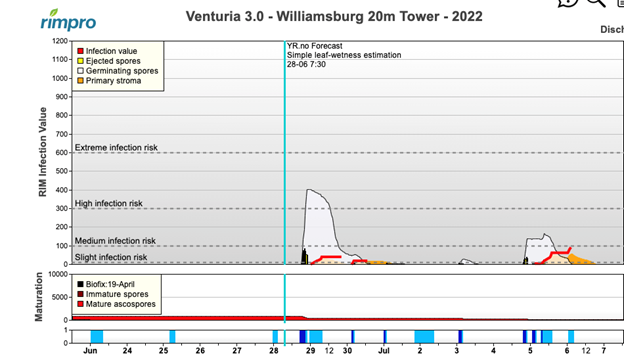Northwest Michigan fruit update – June 28, 2022
The region is dry and could use rain. Cherries are coloring, and we can expect local sweet cherries for the National Cherry Festival.

Weather report
Conditions are extremely dry across the region. The last rainfall was on June 19, and some areas received very little rain during that time. There is some rain in the forecast, but according to B.J. Baule, Michigan State University Department Geography, Environment, and Spatial Sciences, the rain will be spotty and will likely come in the form of thunderstorms. There is a higher chance of rain in the Upper Peninsula than anywhere in the Lower Peninsula.
The weather will be warm and sunny, and Thursday will be the warmest day of the week. There are some scattered showers in the forecast for Friday and into Saturday. Conditions will be warm and fairly dry. The medium range guidance is calling for near normal to above normal temperatures with a chance for wetter conditions for the first week of July. We have accumulated 1267 growing degree days (GDD) base 42 and 764 GDD base 50. These accumulations are very close to our 32-plus plus averages: 1252 GDD base 42 and 733 GDD base 50.
Crop report
Apples have increased in size 4-5 mm again this week, and Gala at the Northwest Michigan Horticulture Research Center (NWMHRC) are 27 mm and Honeycrisp are at 30 mm. Despite the cool conditions, growers had great thinning activity, and most growers are satisfied with their thinning results. Tart cherries are much more evident on the trees this week as they are starting to color. The crop seems to be sizeable, and there is some concern about ripening the crop with fewer leaves than normal. Sweet cherries are lighter in many blocks, and they are ripening nicely. We have significant bird damage in the Benton orchard.

Pest report
San Jose Scale. We only two male SJS again this week. Our first catch of males was on 16 May, and the model predicts crawlers at 400-500GDD base 51. As of today (28 June), we are at ~524GDD, so growers with past SJS problems should be treating for crawlers this week.
We caught an average of 15 lesser peach tree borer this week.
We caught no American plum borer moths this week.
We caught an average of four peach tree borer week.
We caught no black stem borer this week.
We caught two, nine and 11 codling moths today. Our biofix date for CM at the NWMHRC is 15 June.
Obliquebanded leafroller was notable in its flight this week. We caught a lot of moths this week: 5, 22, 44, 8, 50, and 42. Egg hatch begins at 400-450 GDD base 42 after biofix. This is our first week for catching this pest.
We have trapped spotted wing drosophila (SWD) adult flies at the NWMHRC on June 22, and nearly all traps caught flies. We caught zero flies on 24 June. Yesterday, June 27, we caught seven females and two males. Using the SWD model on Enviroweather, we are considered at high risk because fruit can be infested by SWD. The model is based on fruit development and not flies. If using the model on Enviroweather, make sure to check “yes” flies are present to ensure the model is reading correctly. We are at 1031 GDD base 39.2 F post full bloom for tart cherry.
Disease report
We have had four cherry leaf spot infections this season. However, we have heard reports of active lesions in many commercial blocks. Growers need to continue to protect new tissue from infection to keep leaves on the trees through mid-September.
We have not observed or heard reports of American brown rot this season. However, we have seen a lot of drop and some canker in fruit; both of these scenarios can result in American brown rot infections if we have warm and wet weather. We have seen sporulation on fruit that did not drop in the west central region of the state. “American brown developed strong resistance to Indar in Michigan” is an excellent article on fungicide resistance in American brown rot, and a good reminder that Indar is not an effective material for controlling this disease.
This hot and dry weather has caused more powdery mildew in apple blocks than usual. We still have not seen powdery mildew show up in the UTC of the efficacy trial.
We have seen apple scab on leaves of commercial blocks this season. We were not expecting to see the lesions as it has been dry with limited rain events. Growers that have scab on their leaves will need to protect fruit. We are so close to the end of primary scab season. The RIMpro model shows no more spores after the next rain event predicted on June 30 (Photo 3). The west central region has not called the end to primary scab.




 Print
Print Email
Email

